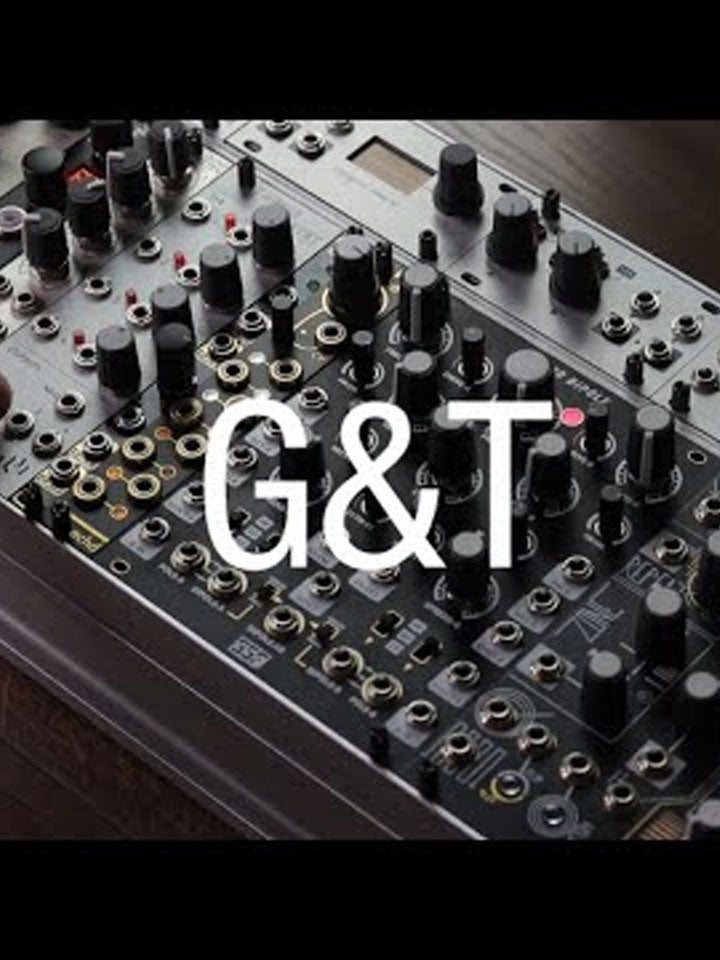The goal of this page is to squash the confusion over Gates and Triggers.
In the Beginning,
Dr. Bob Moog's modular systems used a signal called "Trigger" to identify when a key on the keyboard was pressed and released. This signal could also be generated by other sources such as foot pedals and drum controllers. Triggers are used to start envelope generators, sequencers, etc, and are a critical function in any synthesizer system. Moog systems use 2 types of Triggers: Voltage Triggers (AKA V-Trig) and Switch Triggers (AKA S-Trig, sometimes called Shorting Trigger).
Voltage Triggers

V-Trig signals are patched using normal 1/4" plugs and jacks, and in a Moog modular are approximately 3 volts when ON and 0 volts (Ground) when off. V-Trigs in a Moog modular are created by the 960 Sequential Controller (90% duty cycle) and by the 961 interface that can convert S-Trigs to V-Trigs. V-Trigs are the same as what we call 'gate' today and that's what Synthesizers.com modules use. Gate signals allows for easier, more intuitive patching and eliminates the need for conversion. With V-Trig and modern gates, you can patch gates right along with audio signals using the same patch cords and do things like fire envelope generators with oscillators.
Switch Triggers

S-Trig signals are different than V-Trigs and use a special 2-pin blade-type connector made by Cinch/Jones. Basically, an S-Trig is just a passive switch closure to ground. This means an S-Trig is an inverted version of V-trig, and without the high-side voltage. Moog keyboards produce S-Trigs and Moog 911 Envelope Generators use them to control their cycle. One advantage of S-Trigs is that many source signals can be connected in parallel to create a logical OR arrangement so any signal makes it through. I believe this was Bob's intended goal and he thought it would be important for adding a multitude of controllers. The disadvantage of S-Trig is that it is not readily patched like other signals because it uses a special connector and signal, and it must go through a conversion module to interface to modules requiring a V-Trig.
Today,
Today, virtually all synthesizers use 'gates' which are essentially V-Trigs. Typically modern gate voltages are +5 volts or more. Usually they have a positive polarity, but not always, and some synthesizers have a switch to select polarity.
Yet Another Type of Trigger
To confuse matters worse, some systems have a signal called 'Trigger' that is neither a gate (V-Trig) or a S-Trig, but instead is a short positive-going pulse that happens only at the initiation of a keypress. Some envelope generators can accept this type of trigger to RE-Trigger it before the envelope cycle completes.
Converting to Switch Triggers

You won't need to convert between S-Trig and V-Trig (gates) unless you're using older Moog-style systems, because most modern equipment uses gates exclusively.
If you need to convert a gate (V-Trig) to S-Trig, use this special cable. You can use this cable to convert gate signals from a Synthesizers.com system to Switch Trigger signals needed to activate Moog envelope generators. It has a male 1/4" plug on one end (the gate end) and a 2-pin Cinch/Jones plug on the other. Here's the circuit if you want to make your own.
To convert from a Moog Switch Trigger to a voltage gate needed by Synthesizers.com modules, you'll need to run the Moog Switch Trigger signal through the Moog 961 module to create a voltage. You can also use the Q142 Pedal Interface which will convert any mechanical switch to a voltage level.
Summary - Gates and Triggers in a nutshell
Here are the main things to know.
- Gates are on/off signals, usually from a keyboard controller to indicate a keypress.
- Voltage-Triggers are also called V-Trigs and are the same as gates, and are normally a positive voltage around 3-5 volts.
- Almost all modern synthesizers use positive gates.
- Switch-Triggers are also called S-Trigs, and are switch-to-ground signals - not used much any more.

